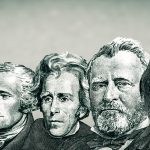G3 and Science Education
Carl Sagan is famous for saying of science education in America: “Every kid starts out as a natural-born scientist, and then we beat it out of them. A few trickle through the system with their wonder and enthusiasm for science intact.”
Once upon a time, I was one of those kids that trickled through the system. I fell in love with biology in high school (principally genetics and evolution), hated chemistry, and tolerated physics. But someone long ago decided that I would need a bunch of not-very-relevant prerequisites to get a college degree, so I stubbornly plunged ahead to get to the good stuff beyond. To keep my sanity, I discovered and nurtured a love for history, working towards an alternate major should I need it. In the end, I left college with a bachelor’s in Molecular Biology (Genetics). But my desire to make science a career was on life support, and a year at a DNA sequencing start-up left it dead.
Needless to say, this is not how I think science education should be for learners. But if this is what the path of science education produces (and I was far from alone in my peer group in deciding that science was actually not for me), then it’s not working for society either. And this is why we approach science differently at Online G3.
The way we teach science in America leaves many people with the impression that the vast majority of science is performed in a laboratory. It focuses on recreating experiments in a classroom that demonstrate how and why things work the way they do. It’s the factory line approach to teaching, but it fails to recognize that some of the most relevant work in science is not lab-based. Sure, there are some folks trying to make laser fusion work at Lawrence Livermore. But physics is much more relevant to a much larger percentage of the population in the way it affects our lives. As students in my Physics Literacy class can tell you, physics informs every bit of technology around us, while also being inseparable from politics and culture. Take, for example, climate change. To understand the correct energy public policy that the United States should be pursuing, you need to understand more physics than most of our congresspeople do. And that is just one example of where science education is needed outside the sciences.
Seven years ago when I first started at Online G3, I of course decided to teach AP-level Biology. It was great to get back into what I had loved in high school as well as catch up with what had changed since I graduated. The classes worked ok for most of my learners, I think. More than one got a 5 on the AP exam. There were downsides, though. Doing labs online was challenging. I had trouble finding ways to teach the dry science content in a compelling way that satisfied me, and I wasn’t happy with the value the course provided for my students. I started to think about how I could make science classes better. Eventually, I decided that a traditional science class didn’t fit what I wanted to do in our program. At the same time, I had begun constructing our Physics Literacy class around an alternate approach that had been trialed at my alma mater: mixing science and humanities in compelling ways. I discovered that what I really wanted to do for our cohorts is make the sciences relevant in context to their lives, whether they planned to go into the sciences in college or not. It worked so well that I recently added an Astronomy class based on the same ideas: make astronomy relevant to our daily lives and our future on and off Earth.
So, this fall, I am coming full circle with a new biology class focused on putting the life sciences in historical and modern context: Biology, Beavers, and Bees, Oh My!: A Multidisciplinary Approach To Life Science. Like our other science offerings, the intent here is to make sure that learners understand the impact of biology topics on their lives as well as on the future. In addition to working from a great Norton text, learners will also take on two fantastic case studies on keystone species (the aforementioned beavers and bees) and a prize-winning survey of biodiversity in the 21st century.
Keep an eye on this space for more information in the coming months.




